Know Your Trees
So it is turning into Tree Week here. Following up on comments on pictures of palm trees in Dolores Park, I came across Michael Sullivan’s book The Trees of San Francisco.
It has some stark descriptions of a treeless San Francisco:
– Shortly after arriving in San Francisco in 1776, the Spanish described the area as “the very worst place [for settlement] in California . . . since the peninsula afforded neither timber, wood nor water, nothing but sand, brambles and raging winds.”
– Before the gold rush, “much of San Francisco was largely treeless, its grassy hills interrupted by only a few live oaks and California buckeyes huddled in wind sheltered valleys.”
– when Nikita Khrushchev visited San Francisco in 1959, he reportedly commented on the city’s beauty but noted the remarkable lack of trees.
Things got better — trees were planted as the city grew, but this 1887 photo looking at the Presidio towards the Golden Gate shows how stark the landscape was. The eucalyptus, pines and cypress planted in 1882 are what you see today. (Historical images from SFPubLib and Calisphere.)
(Hover/click on any of these images to get to the original source.)
And here we have miniature palm trees in Dolores Park from 1909. This was first picture of palms in the park I can find — they didn’t seem to be there pre-earthquake).
This picture is undated, but I’m guessing the early 1920s given the buildings size of the trees on Dolores St. (I don’t think those palms grow very fast.)
Here we have kids on the swings in 1929.
(These kids would now be in their 80s.)
Swings and trees, 1935:
1964:
Slowest. Trees. Ever.
Dolores St seems to have gotten its boulevard palms in stages, starting in the 1920s.
1934: short palms at Dolores and 22nd (big gap to the south):
No palms looking south on Dolores from 23rd, 1923 (though there are some on the top of the hill):
Opposite direction, 1958 (looking north from 24th street):
The book has a list of the 20 most popular trees planted by Friends of The Urban Forest since they started in 1981 following budget cuts that effectively killed the city’s tree planting program. (They plant about 1000 a year, 43,000 since 2004. Go donate.)
Reading through this list I only recognized a few of the names, but when I started looking them up they all looked familiar. I share my newfound pattern matching with you, internet. Most pictures from FUF’s flicker feed, latin names point to Wikipedia.
1. purple Leaf Plum (Prunus cerasifera) – Cultivation
2. Japanese flowering cherry (Prunus serrulata) – Japan
3. New Zealand Christmas tree (Metrosideros excelsus) – New Zealand
4. small-leaf tristania (Tristaniopsis laurina) – Australia
5. strawberry tree (Arbutus unedo) – Europe
6. Brisbane box (Lophostemon confertus) – Australia
7. Victoria box (Pittosporum undulatum) – Australia
8. mayten (Maytenus boaria) – Chile and Argentina
9. southern magnolia (Magnolia grandiflora) – United States
10. ficus (Ficus microcarpa) – Asia
(Don’t think they are planted any more — they buckle sidewalks, and a freak freeze in 1990-1991 killed many off, according to TTOSF. A bunch on Potrero? The above is Spear.)
11. Bailey’s acacia (Acacia baileyana) – Australia
12. bronze loquat (Eriobotrya baileyana) – Asia
13. Indian hawthorn (Rhaphiolepsis ‘Majestic Beauty’) – Asia
14. hopseed (Dodonea viscosa) – Australia, others
15. cajeput tree (Melaleuca quinquenervia) – Australia.
(Now I’m no botanist, but cajeput is coming up as Melaleuca linariifolia, which is described as “spongerubbery” while quinquenervia is a) hard to type, b) invasive in Florida per this exciting report, and c) often described at a Paper Bark Tea Tree, so don’t get your trees in a knot.)
16. callery pera (Pyrus calleryana) – Asia
17. ginko (Ginko biloba) – Asia
18. olive (Olea europaea) – Mediterranean
(There are olive trees more than 2000 years old in Portugal and Crete!)
19. glossy privet (Ligustrum lucidum) – Asia
20. evergreen pear (Pyrus kawakamii) – Taiwan

Moving from new trees to old trees, many in the city are getting landmark status. Some palms on Dolores are protected, as is the huge Moreton Bay fig in front of St. Luke’s on Valencia (which unfortunately lost a branch last month.) These and other important trees are listed on the Landmark Trees page.
Our Valencia Street moreton bay fig in all its glory:
Anyone know how old it is?
Trackbacks
- Friday PM Linkage
- Streetcars on Dolores, Valencia and Guerrero « Burrito Justice
- The Palm Broker Blog
- Mock friends « Mock Duck
- A Love Letter to Trees: Burrito Justice has an amazing!!! chronology…
- Crescent Zoom « Burrito Justice
- Landmark Tree Tour « FOREST KNOLLS
- Know Your South Mission Historic Resources « Burrito Justice
- Know Your South Mission Historic Resources « Burrito Justice
- History of a Tree, A Branch, A Block « Burrito Justice
- Fly with me over San Francisco in 1938 « Burrito Justice
- Street Science: The Mission’s Trees – Mission Loc@l : News From San Francisco's Mission District
- Ciencia Callejera: Los Árboles de la Misión – Mission Loc@l : News From San Francisco's Mission District
- Know Your South Mission Historic Resources « Burrito Justice | ExploreSF
- South Mission Historic Resources | ExploreSF
- know your Southern Mission Historical Resources
- 24th St Mission BART station report – Composite

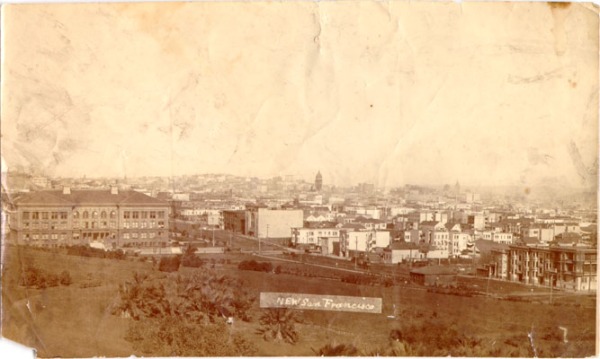
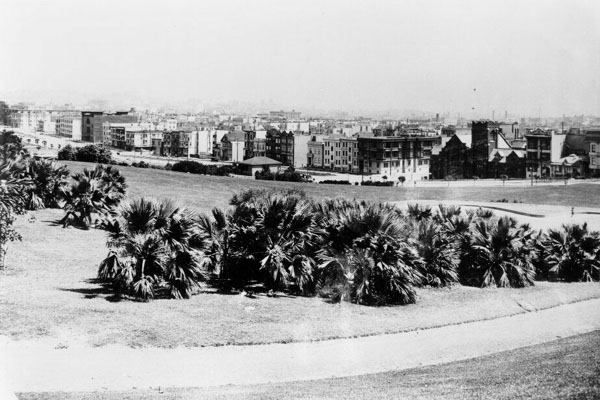
![1929 Jan 28 Babies getting the air in Mission Park on Dolores Street] [graphic]. AAA-6820 1929 Jan 28 Babies getting the air in Mission Park on Dolores Street] [graphic]. AAA-6820](https://burritojustice.com/wp-content/uploads/2009/07/1929-jan-28-babies-getting-the-air-in-mission-park-on-dolores-street-graphic-aaa-6820.jpg?w=600)

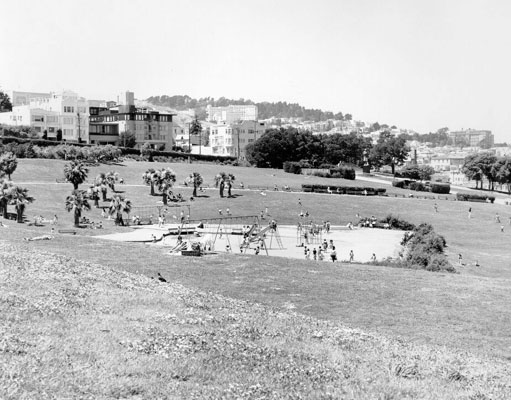





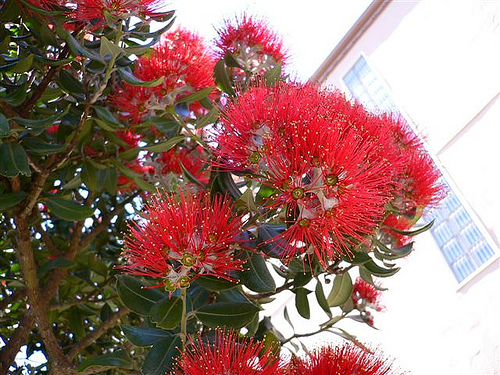

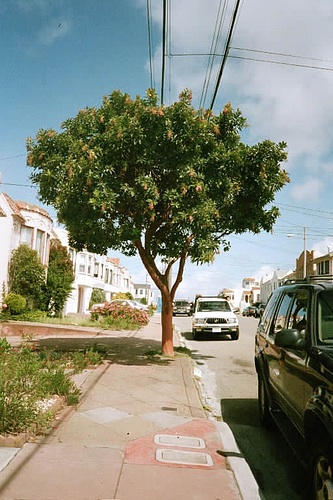
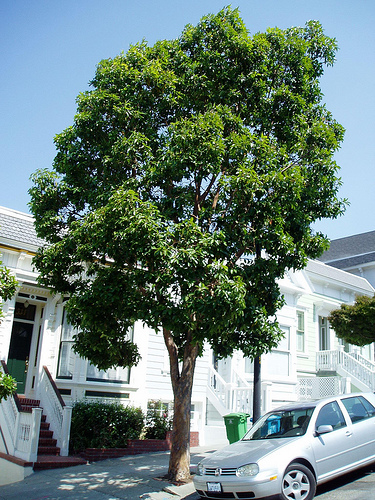





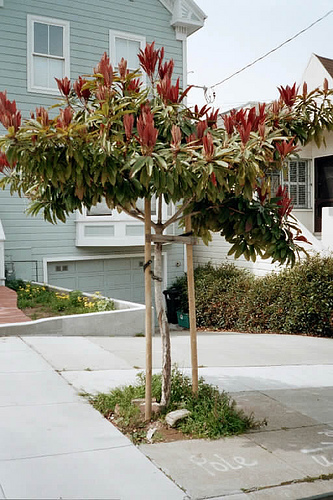

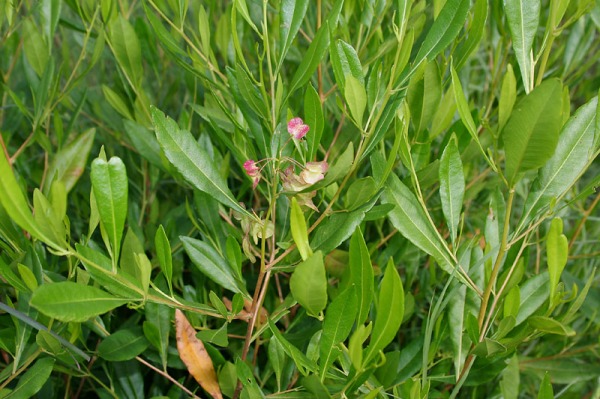


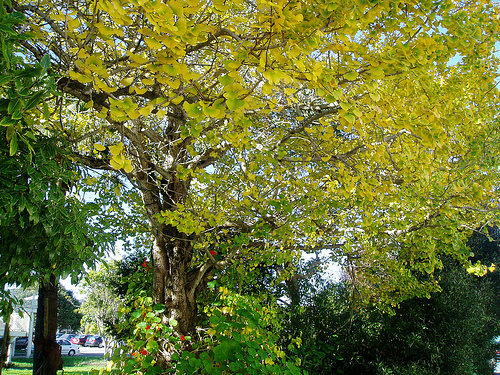

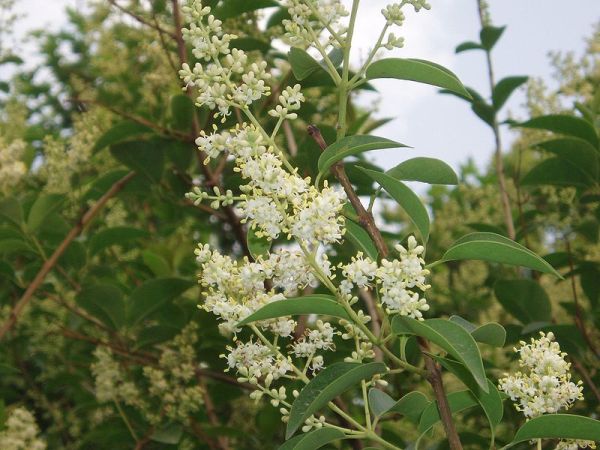






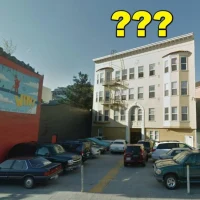
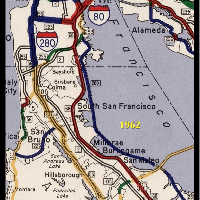

What’s too bad is that all the trees that the city has chosen to plant… are to allow for as little leaf/fruit fallout as possible… Basically they could have planted fruit trees all over the city, providing oranges, apples, cherries to everyone in SF, but they have chosen not to. That’s just really sad :(
You’re an idiot.
None of the trees would do very well in SF climate.
Plus – can you imagine the bitching and fighting over fruit (Somebody comes by in the middle of the night and takes it all, somebody else gets mad about that, etc.)
Then there’s the people who bitch because the fruit falls in their sidewalk…..
and the lawsuits…
You must have smoked many bong hits before coming up with that silly utopian fantasy.
ahhhhh…San Francisco…..where logic takes its holidays.
But I should also add – great pics and an excellent blog!
fantastic post.
I love #7. Such a beautiful heady scent to the flowers.
About the fruit trees. No, you really don’t want that. It gets nasty when people don’t clean it up. And they don’t.
Once again, awesome history post and old school pics. Plus the final pic of the huge tree is excellent!
If the plum trees are any indication, people don’t.
Though the SF Glean folks could be a solution to that.
“For San Francisco to be more sustainable, we need to grow more of our own food. To plant more fruit trees, we need to show the city we can manage the harvest. “
Added a few more pix of the Dolores Park palms.
Such a great post!! Love all those treeeeeeeeees.
Excellent post as always. Thanks for doing the research for us :)
I think I’ll recommend that you read Richard Dana’s ‘Two Years Before the Mast’. Besides being a fantastic book about sailing and sailors and early California life, he describes in great detail the very early settlements that became SF. Of particular interest in light of this post, he describes a trip to Angel Island to get firewood because of the paucity of trees elsewhere – and if you think you’ve had a bad vacation before, wait until you read that section.
Oooh, history AND sailing –thanks Chris, will do. I’m a big C.S. Forester fan.
Do you happen to know the military angle of the history of trees in SF? Would love to know more… know that they planted trees in the Presidio and over in Marin…
Nice page!
A good addition would be a description of the different types of palm trees found in the mission.
For example, mission street has mexican fan palms almost exclusively. Dolores has a mix, the big ones are Canary Island Date Palms (spain), also some pindo palms (somewhere in south america I believe) as well as the Mexican fan palm and the California fan palm.
They are non-native of course, but not invasive. The advantage of these types of trees for landscaping is that they are not only attractive, but they require very little watering and their root balls are relatively shallow.
Those are two reasons why we don’t plant redwoods, which every San Franciscan loves.
The Mexican fan palm is invasive and through hybridization is introgressing into the native fan palm populations.
those old school dpark pictures are great
Well, I love the beard-like trees of SF like I love Leonardo DiCaprio with face fur.
But let’s go back to Leonardo ( I mean SF — oops!) prepubescent.
I have always (in an obsessive, BJ sort of way) looked as I toodled, for parts of California that by accident of fate were not developed and also happened to be basically the same as SF before the ancestral Dirty Hairy invasion.
You know, when it was just warring tribes and birds and deer and mountain lions and old hippies (yes, people, True Blood is code for Old Hippie History. That guy panhandling on Haight St? He’s been there since the year 1202!)
My conclusion: North Monterey. Behold:
Whenever I drive into Monterey from Highway 1, and pass along the coastal treeless dunes that are relatively untouched, I think that SF looked very similar to this when it was nemo-frisco.
The reason why there’s a gap between 22nd and 24th? The tracks ought to be a hint, folks. That would be the #11 streetcar, which ran out on Mission from the Ferry building to 22nd, then to Hoffman & 24th via Chattanooga, returning via Dolores St. The tracks would have been removed about 1952 or ’53, since the caption from the 1958 photo says the trees were planted “five years ago.”
This map from 1943 will entertain any transit junkies:
http://cprr.org/Museum/Maps/MSRWY_SFO_1943_BCC.html
LibertyHiller, loving the map. Funny side note: Look at the street naming sequence. It goes 18th, 17th, 16th.. then 19th, 20th, 21st etc. Appears the street names (18-16) are off on the map. I assume its because the street names are subordinate to the rail lines. Any thoughts?
Awesome map — thank you LH. Didn’t realize the Dolores tracks were part of the 11.
Here’s the 11 making a right from Dolores onto 22nd in 1948, and at 24th and Hoffman in 1944.
I know the tree situation in SF was so bleak for a while that Frederick Law Olmstead, the designer of New York City’s Central Park, completely dismissed the prospect of cultivating large park in the area of SF where Golden Gate Park now lies. They had to start with tough little shrubby plants to create a lee, then grow more attractive plants as a second wave.
Would like to trade blogroll links if you’re interested– mine is mockduck.wordpress.com (you were kind enough to comment on our Celine Dion post a little while back). I will add Burrito Justice. – Dan
Everyone read Mock Duck! (Seriously — great blog.)
From the Presidio military history:
“In order to make the contrast from the city seem as
great as possible, and indirectly accentuate the idea of the power of the Government, I have surrounded the entrances with dense masses of wood.”
McDowell, the Army commander of California who ordered the planting of the trees, became a commissoner of Golden Gate Park after his retirement from the military.
On Arbor Day in 1886, “4,000 children arrived at the Presidio. Adolph Sutro had donated 3,000 young slips and the Army had dug 5,000 holes in the hard ground. Along with the slips
many a child planted “a home treasure … so as to identify the expected tree of years yet to come.”
“Between 1888 and 1897 the Army had planted nearly 100,000 trees on the Presidio at a cost of $58,000…” That would be over a million dollars in today.
Awesome post — many thanks for the great photo documentation.
The slow-growing fan palms of Dolores Park so well illustrated here are Brahea edulis, the Guadalupe palm, from a volcanic island 200 miles southwest of San Diego, where until recently it was highly endangered by feral goats (http://tinyurl.com/nqf5nh). Now that the goats have been removed (c. 2003: http://tinyurl.com/nu3hjh), the palm seedlings are able to grow and this species might be saved from extinction in habitat. Guadalupe Island, its home, is foggy, droughty, and windy, like San Francisco, though somewhat warmer. Monterey Pines, Pinus radiata var. binata, are also native there, along with a bunch of other species associated with California and Baja California.
Part of why the palms grow so slowly in Dolores Park is that they get too much water from the lawn irrigation; they grow pretty slowly in any case, though. Two perfect ones are on Dolores near 15th in front of the historic 1850s cottage the Richard Cohen Residence, http://tinyurl.com/m8vlk7.
These are the palm species on the Dolores median:
– Phoenix canariensis, Canary Island date palm, is the big giant that predominates.
Washingtonia robusta, the Mexican fan palm, is the tall skinny species found near 15th and 18th and 23rd/24th streets.
– Brahea edulis, the Guadalupe fan palm, is the short, naked-trunked fan palm also at 16th St. and 18th and at various points toward 30th St.
– Two Phoenix dactylifera ‘Zahidi’, the true date palm, were recently planted on Dolores near 30th.
Phoenix loureiroi var. pendunculata is a rare Himalayan species planted at Valley. There’s also a mystery Phoenix hybrid or species at Liberty with a skinny trunk and soft, glossy leaves.
No pindo palms, Butia capitata, are in the median of Dolores. You can see a prominent pindo palm in the corner garden of Home restaurant on Market at 14th and Church. No California fan palms, Washingtonia filifera, are on Dolores, either. Very few are visible in San Francisco because they get crown rot and die in our coastal climate, but a few are scattered about; one that hasn’t died yet is on Harrison near 21st in front of Moscone Elementary School.
Great post, but it looks like your example picture of the Victorian Box shows a different kind of Pittosporum, not the fragrant undulatum
Lovely tree gallery. A couple of alterations:
Photo #5 shows Arbutus ‘Marina’, a hybrid between two Mediterranean species introduced in SF in 1917.
Photo #7 shows Pittosporum crassifolium, Karo, from New Zealand, not the more-common P. undulatum, from Australia.
Thanks Pedestrianist, picture corrected. (A week ago I didn’t even know it existed, and now I know there are two types. Viva la internet.)
And thank you for the palm details, J-son — at some point I will take some pictures and piece together a “Know Your Palms” piece.
Anyone know what those trees are in the sunken area between the De Young and the Academy of arts & sciences are called? They also are all over Pacific Heights and go all gnarly in the fall/winter when they lose their leaves.
Awesome post!
Joes: the original trees planted btw the De Young and Academy of Arts & Sciences were Elms, but they’ve been getting replaced with tougher London Plane Trees as they die. They look all gnarly because of a pruning technique called pollarding.
Tree #7 is dead. Sad story, but true. I was working just up the street there (West Portal) and someone jumped the curb and took it out.
Nice trees. I wish they would plant more local trees, such as madrones: http://en.wikipedia.org/wiki/File:PacificMadronaGrove.jpg. I’m also partial to magnolias and dogwoods.
A landscape without trees is not “bleak.”
At least, not if it’s an environment that doesn’t naturally support trees. I love trees as much as the next guy (probably more than most next guys, actually), but we shouldn’t undervalue the place and beauty of the dune, scrub and chaparral plants that belong to San Francisco and surrounding areas. Insisting that trees must be planted everywhere is just as weird as insisting that everything must be paved. I love my sandy, windblown Sunset District.
Who wrote “the very worst place [for settlement] in California”
Mike Sullivan quotes it in his book, I think on page 8, but I can’t pull it up in the Google Books preview right now so not sure if there’s a footnote.
Hey, we need you to do your Mysterious Waters of the Mission talk *in* the Mission soon!
Got a venue? We’ve got the new cartography. SF Creek Maps are back in print.
Nikita K didn’t come to SF in 1939, I think that would have been in the 60’s. SF was still the “City That Knows How” and the mayor and supervisors were telling him how San Francisco was a world class city. He told them that world class cities had street trees, and a program was begun. The city-funded tree planting effort was a victim of the passing of Prop 13.
Four years late, but yes, 1959, not 1939 as I typo’d many moons ago.
I just noticed something in the 1909 picture of Dolores Park. If you look in the distance, you can see what looks like a rocket/bullet shaped building. If I’m not mistaken, this is the ruin of the old City Hall… still up 2-3 years after the 1906 Earthquake and Fire. It may be worth exploring why that ruin was up for so long…
Interesting. @kevinmonty posted a higher-rez version a few years back. I’m not sure exactly about when Dolores Park got redesigned after it was covered in earthquake shacks, but the last refugee camps were shut down in 1908, so that picture has to be pretty close to 1909.
Great blog you have here but I was wondering if you knew of any message boards that
cover the same topics discussed here? I’d really like to be a
part of community where I can get responses from other knowledgeable people that share the same interest.
If you have any suggestions, please let me know.
Kudos!
creditos rapidos sin nomina
Whenever I see evergreen pearl I start to find lakes that I can fish.
I’m no longer certain the place you are getting your information, but good topic.
I needs to spend a while finding out more or working out more.
Thanks for fantastic info I used to be looking for this info for my mission.
Hello I tried to write to you on Twitter but I guess you’ve blocked that. I have a tree question about Garfield Square which I know used to be a racetrack and then a ball field but can’t find mention of the redwood trees there which look about 100 years old. Do you know where I should look for more information? I hope you see this.